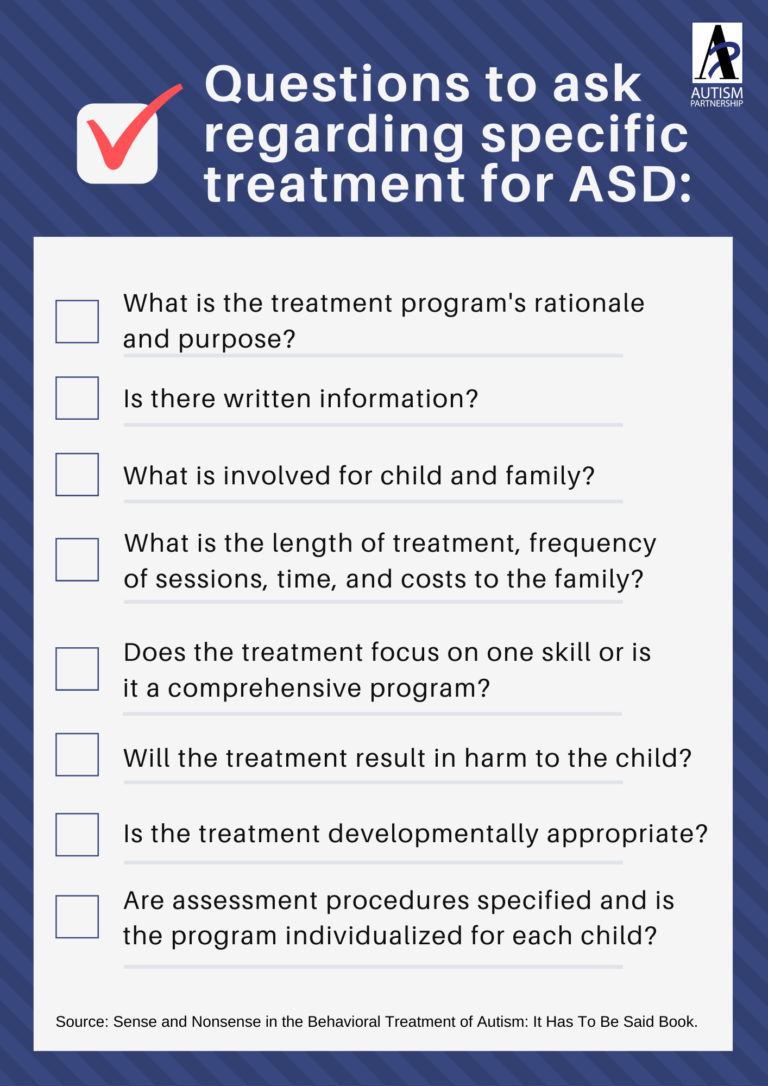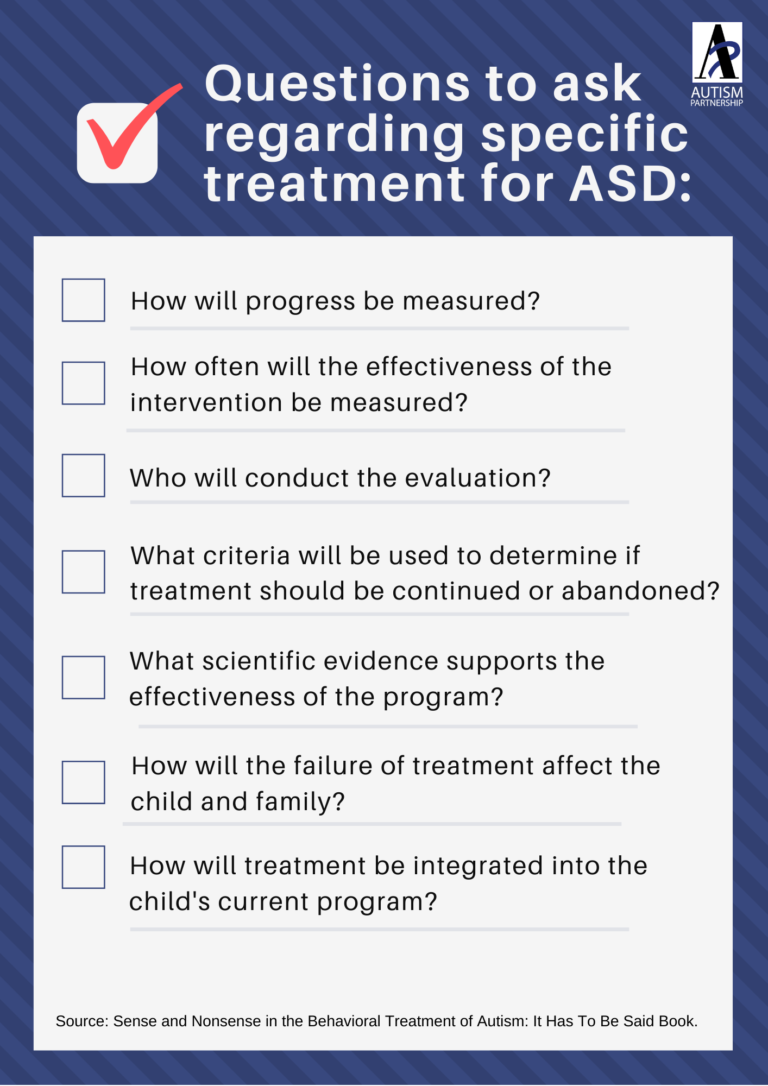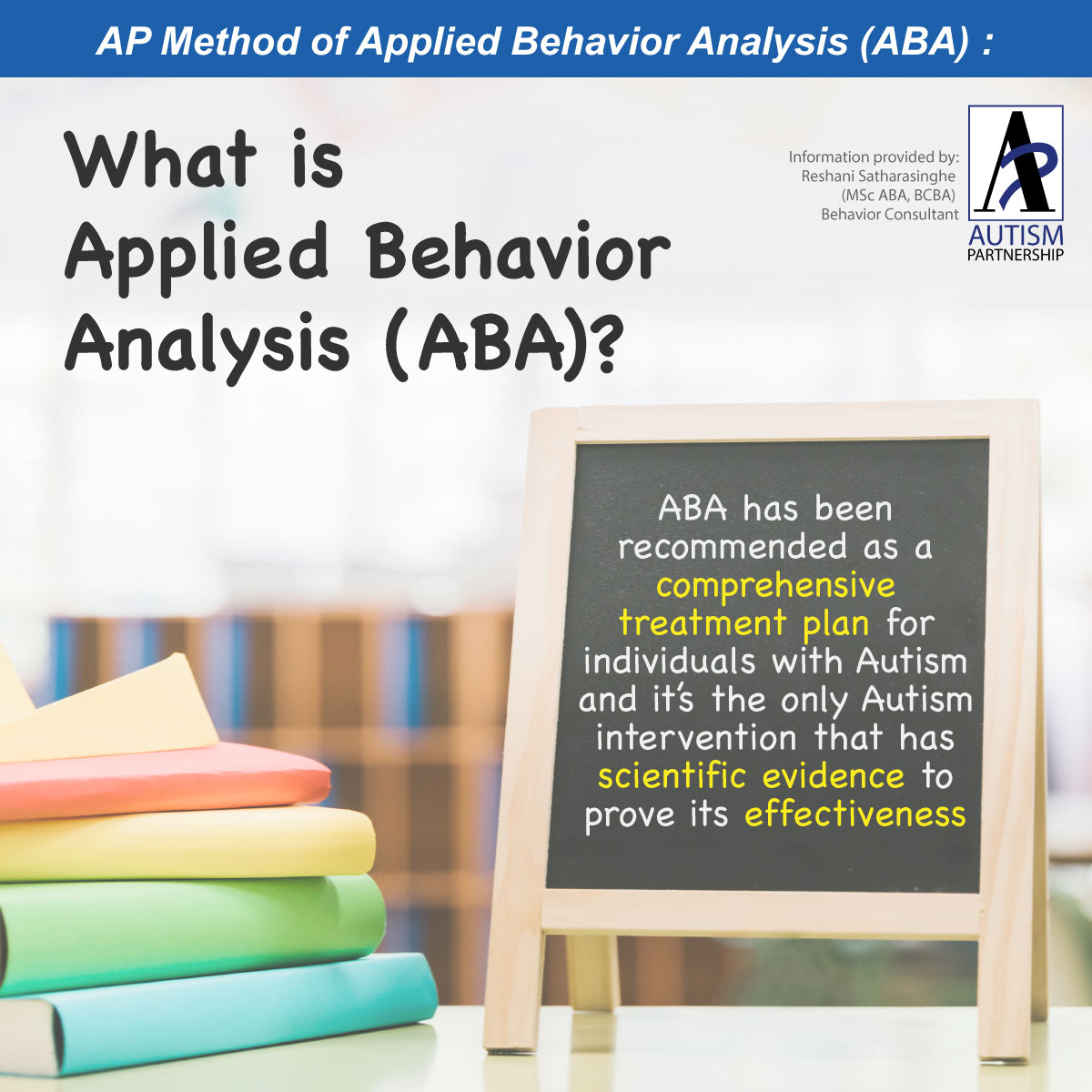Autism Recovery & Treatment
According to Singapore General Hospital (2018),
“There is no known cure for autism. With appropriate education and support, children with ASD can develop their communication and interaction skills to become independent adults and lead productive lives. Therapies do NOT cure autism, although they bring about marked improvement. Medication may help reduce self-injurious behaviour or associated conditions such as epilepsy. Alternative treatments such as dietary, herbal or vitamin remedies have been shown to be ineffective in controlled studies.”
Choosing the Right Autism Treatment Method:
Key Elements to Achieve the Best Outcomes for Children with ASD

There are several studies demonstrating the effectiveness of Applied Behavior Analysis (ABA) for people diagnosed with ASD, including a study conducted by Autism Partnership (2011). In these studies, the children with the best possible outcomes had these key elements in common:
- Early Intervention
- Consistency of Treatment
- Intensity
- Utilizing Quality ABA (Autism Partnership Method)
- Intensive Supervision
- Parental Expertise
- Not Incorporating Other Treatment (Diluting Impact of ABA)
Choosing the Right Autism Treatment Method:
Understanding Factors That Contributes To Autism Treatment Outcome
There are many factors that contribute to the long-term treatment outcome of a child with autism. Some of these factors can be controlled and some cannot.
| Cognitive Ability | Research has shown that children starting at the same age, with the same intensity, consistency of treatment, and same treatment choice, may have different treatment outcomes. This, we believe, is due to the individual cognitive ability of the child. Some children may learn very fast and others may learn slower. Some children may find it difficult to learn abstract concepts, while others may become fluent in all areas. |
| Treatment Age | It has been well documented that children with ASD benefit the most in the early years. Early intervention is critical to ensure the maximum progress. This is not to say that older children do not benefit from treatment; they do, however as children get older the developmental gaps become wider and more difficult to catch up. Thus, it is recommended that intervention be done as early as possible. |
| Quality of Treatment | It is critical to ensure that the treatment your child receives is of a high quality. There is tremendous variability in the quality of treatment services. Providers may claim to provide treatment services without the proper training or quality control. Professional and well-qualified treatment Therapists should receive ongoing extensive training and supervision by experts in the field. Your program should be as good as the person who designs the curriculum and the people that implement it. |
| Treatment Intensity | Children with autism face the formidable challenge of not only trying to catch up the developmental gaps that already exist but also they need to keep up their learning pace with their peers to ensure that the gaps do not widen. For example, a child who has a 2-year delay in language may only learn one year of language in a year. This would normally be ideal as it represents a lot of progress. However, the two-year delay still exists because the child is older and his peers have acquired another year of knowledge. In order to actually catch up, the student needs to learn more than one year of language in a year. If the student caught up 1.5 years of language every year, it would then take him or her 4 years to finally catch up with peers. This then presents a real challenge. Given the multitude of deficits that are often present with autism, it is critical that all areas are taught intensively and systematically. It is not unlike taking a child and training him or her to become an Olympic swimmer. Spending one hour a week on one of the deficit areas that is 2 years behind is unlikely to yield the results we may wish for. Research has consistently shown that a high volume of hours is ideal to maximize a child’s learning progress. |
| Consistency | In order to maximize program progress, it is critical that the whole treatment team provides service in a consistent approach. If the student is doing sign language in the morning and using pictures to communicate in the afternoon, it is likely to result in confusion on the part of the student. If a number of practitioners are working together, it is then essential that they meet regularly to formulate a comprehensive plan so that the treatment can be consistent. This is also true for the consistency between parents and the treatment team. Parents need to be involved and develop knowledge and expertise in treatment so as to help their child learn and generalize skills. |
Choosing the Right Autism Treatment Method:
Ask Critical Questions About Treatment Method


- What is the treatment program’s rationale and purpose?
- Is there written information?
- What is involved for the child and family?
- What is the length of treatment, frequency of sessions, time and costs to the family?
- Does the treatment focus on one skill or is it a comprehensive program?
- Will the treatment result in harm to the child?
- Is the treatment developmentally appropriate?
- What is the background and training experience of the staff?
- Does the treatment staff allow input from the family?
- Are assessment procedures specified and is the program individualized for each child?
- How will progress be measured?
- How often will effectiveness of the intervention be evaluated?
- Who will conduct the evaluation?
- What criteria will be used to determine if treatment should be continued or abandoned?
- What scientific evidence supports the effectiveness of the program
- How will failure of treatment affect the child and family?
- How will treatment be integrated into the child’s current program?
Autism Treatment Outcome
What’s the best outcome for individuals with autism?
Many treatment options can help to improve outcomes for children. In a field exploding with alternative treatments, choosing the best course of action for the child with autism can be a daunting task. There is much debate and disagreement about whether it is possible for a child to recover from a diagnosis of autism. There is also varying views on what constitutes autism recovery. So what’s the best outcome for individuals with ASD?
The first use of the term “best outcome” was in the seminal research study by Dr Ivar Lovaas. “Best Outcome” was used to describe a group of children that:
- no longer carried the autism diagnosis when tested by an independent diagnostician,
- had normal IQs,
- were placed in mainstream classrooms with no supports and
- were indistinguishable from their peers
Later studies have also used these criteria to define outcome of children in their treatment programs. It is possible that children reaching this “best outcome” criteria may still have some quirks or have some very minor deficits that would not be able to be observed by a layman. These children might go on to university, have good careers and may get married.
Autism Treatment Method
Is there any autism treatment method that provides the “best outcome” for individuals with autism?
Parenting a child with autism can present many challenges and one of them is searching for the right treatment for children diagnosed with ASD.
Every year there are new treatments declared to be highly effective in treating individuals with autism, or professional interpretations and suggestions, anecdotal reports from parents, and drugs and medications claiming to cure autism, yet most lack the scientific rigor and testing to support its claims. Unfortunately, there has also been great misuse of the term, “best outcome” and parents can be misled by certain providers to believe that all children will attain this kind of outcome if you just do the right kind of treatment or take the right doses of medications.
However, the research on Applied Behavior Analysis (ABA) as an autism treatment method has certainly shown that just under 50% of children who receive very intensive (30 hours per week) of ABA autism treatment services at a young age will attain the best outcome.
So what is the right treatment method for my child with autism?
Applied Behavior Analysis (ABA) is the only approach that has the most extensive research and has been scientifically proven to be the most effective treatment for children with autism to date.
There is no other treatment shown to be more effective or has the same scientific rigor as do ABA, yet with the increasing number of children diagnosed, along with poor access to effective treatments and the broad range of autism treatments abound, families often resorted to complementary and alternative Medicines (CAM) treatments, biologically-based or not, in spite of the absence of supportive scientific data and/or presence of contradictory data and warnings from scientists.
Whether a treatment has been widely tested, adopted, and proven in scientific research and history is extremely crucial in determining the treatment outcome. As a result, parents should and must critically evaluate and scrutinize all treatment options available, inquire whether there is scientific evidence supporting each treatment’s claim of effectiveness, and look at what really works and select a treatment that can deliver results and progress.
Additionally, Singapore’s AMS-MOH Clinical Practice Guideline 1/2010, one of the most scientifically proven treatment methods for autism is Applied Behavior Analysis (ABA). Awarded Grade A in terms of Level of Recommendation and Level 1++ in terms of Level of Evidence. ABA is the highest-rated treatment method by the Singapore Ministry of Health (MOH).
Whether a treatment has been widely tested, adopted, and proven in scientific research and history is extremely crucial in determining the treatment outcome. As a result, parents should and must critically evaluate and scrutinize all treatment options available, inquire whether there is scientific evidence supporting each treatment’s claim of effectiveness, and look at what really works and select a treatment that can deliver results and progress.
Additionally, Singapore’s AMS-MOH Clinical Practice Guideline 1/2010, one of the most scientifically proven treatment methods for autism is Applied Behavior Analysis (ABA). Awarded Grade A in terms of Level of Recommendation and Level 1++ in terms of Level of Evidence. ABA is the highest-rated treatment method by the Singapore Ministry of Health (MOH).

Importance of Early Intervention (EI)
What is the Early Intervention?
Early Intervention is the term used to describe the services and supports that are available to babies and young children with developmental delays and disabilities and their families.
As stated by US Department of Health and Human Services National Institutes of Health,
Research shows that early diagnosis of and interventions for autism are more likely to have major long-term positive effects on symptoms and later skills. Autism spectrum disorder (ASD) can sometimes be diagnosed in children before they are 2 years of age. Some children with ASD whose development seems typical up to that point begin to regress just before or sometime during age 2 years.
Early Intervention Programs (EIP) help children gain the basic skills that they usually learn in the first 2 years of life, such as:
- Physical skills
- Thinking skills
- Communication skills
- Social skills
- Emotional skills
Early interventions occur at or before preschool age, as early as 2 or 3 years of age. In this period, a young child’s brain is still forming, meaning it is more “plastic” or changeable than at older ages. Because of this plasticity, treatments have a better chance of being effective in the longer term. Early interventions not only give children the best start possible, but also the best chance of developing to their full potential. The sooner a child gets help, the greater the chance for learning and progress.
In fact, recent guidelines suggest starting an integrated developmental and behavioral intervention as soon as ASD is diagnosed or seriously suspected.
With early intervention, some children with autism make so much progress that they are no longer on the autism spectrum when they are older. Many of the children who later go off the spectrum have some things in common:
- Diagnosis and treatment at younger ages
- A higher intelligence quotient (IQ, a measure of thinking ability) than average for a child with autism
- Better language and motor skills
Helpful Links for ASD Parents in Singapore:
Screening & Diagnosis
Insurance Related Information
Please check with your insurance provider on policy coverage.



